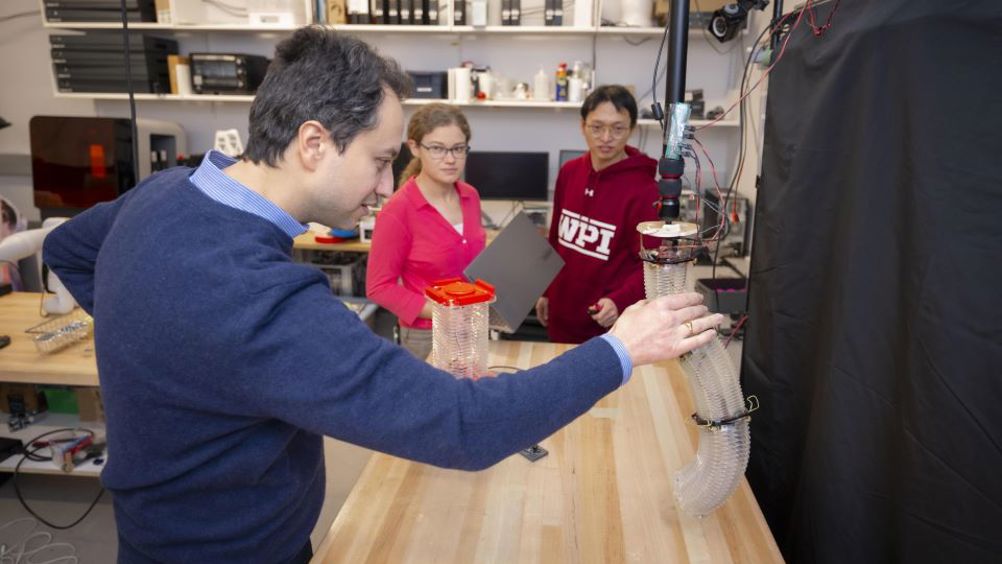Soft robotic arm could put objects in reach for wheelchair users
Researchers are developing a lightweight, flexible robotic arm that will enable a wheelchair user to hold, lift, and carry objects that would otherwise be out of reach.

Through the four-year project, robotics engineering researchers Cagdas Onal, Berk Calli, and Loris Fichera from Worcester Polytechnic Institute (WPI) in Worcester, Massachusetts, are developing a framework for the design, modelling, and control of soft continuum robotic arms that are more flexible than traditional robot arms. The research is funded by a $1,314,792 award from the US National Science Foundation (NSF).
“The basic scientific discoveries we are making in this research address real-world challenges for people who use wheelchairs and need devices that will help them grab out-of-reach objects,” said Onal, who is principal investigator on the project and an associate professor in the WPI Department of Robotics Engineering. “A new class of lightweight, safe robotic arms based on the breakthroughs we are making would give those individuals more independence in their daily activities.”
According to WPI, soft continuum robotic arms expand, shrink, and bend along their entire length to move in different directions and travel around objects, thereby making soft robotics a promising technology in complicated human environments. However, soft robotic arms also tend to be weaker, shakier, and less precise than traditional robot arms made from rigid materials.
Register now to continue reading
Thanks for visiting The Engineer. You’ve now reached your monthly limit of news stories. Register for free to unlock unlimited access to all of our news coverage, as well as premium content including opinion, in-depth features and special reports.
Benefits of registering
-
In-depth insights and coverage of key emerging trends
-
Unrestricted access to special reports throughout the year
-
Daily technology news delivered straight to your inbox










Water Sector Talent Exodus Could Cripple The Sector
Maybe if things are essential for the running of a country and we want to pay a fair price we should be running these utilities on a not for profit...